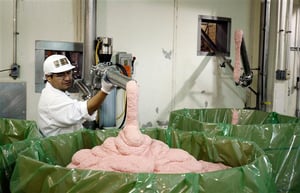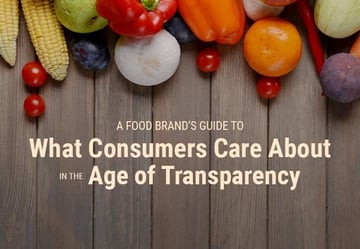When is comes to demonstrating transparency in the food industry, who do consumers think is responsible and what information do they expect? The Center for Food Integrity (CFI) asked these very questions recently in a survey featuring 2,000 respondents and the results were intriguing. And if these questions cause your company heartburn, it's time to talk about food transparency and why it should matter to you.
CFI survey participants were asked two important questions around ingredients and transparency:
- Who is most responsible for demonstrating transparency when it comes to food production?
- What do consumers want and expect food producers to be transparent about?
Who is most responsible for demonstrating transparency when it comes to food production?
The answer options given to respondents included food companies, farmers, grocery stores and restaurants. Food companies won in a landslide. These results held up in areas like the impact of food on health and the environment, food safety, and treatment of animals.
In an atmosphere of increased expectations from consumers and increased regulation from lawmakers, having ingredient information at all points of the supply chain is vitally important. People are watching and they are sharing what they find with the rest of the world. Companies that can point to clear ingredient lists and transparent supply chains can reap the benefits of these better informed customers.
What do consumers want and expect food producers to be transparent about?
Policies, practices, performance or verification. Respondents in the CFI study chose transparency in practices as the main building block in building trust between a brand and their customers.
| What might this look like? One of the biggest incidents involving a lack of transparency was the use of "pink slime" in burger products in the US, exposed by the celebrity chef Jamie Oliver in 2011. Despite a ruling by the USDA declaring it safe, consumers had no interest in eating a beef product treated with ammonia before arriving on shelves. |  |
The lack of food ingredient transparency on the part of the burger brands led to a large backlash and a complete retooling of their supply chains.
What should companies do?
Per a Food Safety News article, "...food companies must commit to transparently communicating, letting the public know what is in the food and why. They have to be willing to talk with consumers and to fully answer their questions."
If companies don't move towards transparency in their food, the consequences are obvious. Loss of sales, loss of brand trust, and terrible press coverage in the worst cases. Getting ahead of this type of impact is the clear choice.
How to get started? We recommend creating an atmosphere of transparency across your supplier community as the starting point for providing clear information about your food ingredients to consumers.
To that end, we've created a free fact sheet around the 3 key elements to supplier transparency:
- Engaging Your Suppliers
- Implementation of Thorough Onboarding
- Supporting Open Supplier Communication
You can download the free resource below.
Interested in seeing how FoodLogiQ Connect can support your food ingredient transparency? Request a demo or download 3 Key Elements to Supplier Transparency: Connecting your supply chain partners to drive efficiencies.
Other posts you might be interested in
View All Posts
Food Industry
6 min read
| September 15, 2016
Why Consumers Will Pay More for Complete Transparency
Read More
Food Industry
3 min read
| February 4, 2021
Consumer Sentiment on Food Transparency and Recall Responsiveness
Read More
Food Industry
4 min read
| November 7, 2019


